Related Research Articles
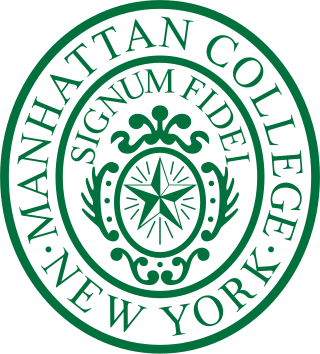
Manhattan College is a private, Catholic, liberal arts university in the Bronx, New York City. Originally established in 1853 by the Brothers of the Christian Schools as an academy for day students, it was later incorporated as an institution of higher education through a charter granted by the New York State Board of Regents. In 1922, it moved from Manhattan to the Riverdale section of the Bronx, roughly 6.4 miles (10.3 km) north of its original location on 131st Street in Manhattanville.

Frederick James Murphy was an American football, basketball, and baseball player and coach and college athletics administrator. Murphy served as the head football coach at Northwestern University (1914–1918), University of Denver (1920–1922), and University of Kentucky (1924–1926), compiling a career football coaching record of 40–37–4. He was also the head basketball coach at Manhattan College (1912–1913) and at Northwestern (1914–1917), and the head baseball coach at Northwestern (1914–1916) and Kentucky (1925–1926). In addition, Murphy served as Northwestern's athletic director from 1913 to 1918.
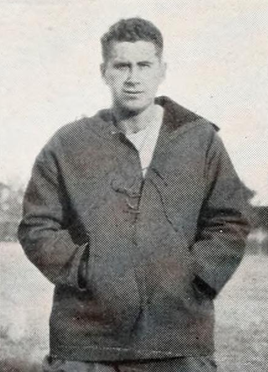
Eugene G. Oberst was an American football player, track and field athlete, coach of football and basketball, and college athletics administrator. Oberst was born the youngest of eleven children. A native of Owensboro, Kentucky, he played football at the University of Notre Dame in the 1920s under coach Knute Rockne, and competed in track and field as a javelin thrower. He won the Olympic bronze medal at the 1924 Summer Games in Paris. Oberst served as the head football coach at Washington and Lee University (1929–1930), Canisius College (1931–1932), and John Carroll University (1946).
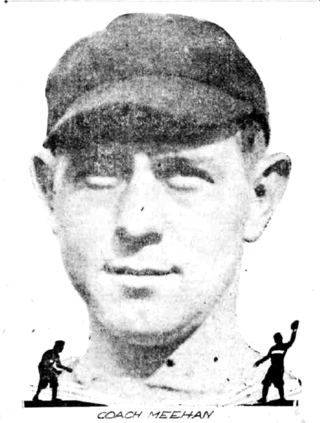
John Francis "Chick" Meehan was an American college football player and coach. He served as the head football coach at Syracuse University (1920–1924), New York University (1925–1931), and Manhattan College (1932–1937), compiling a career coaching record of 115–44–14. Meehan played quarterback at Syracuse from 1915 to 1917.
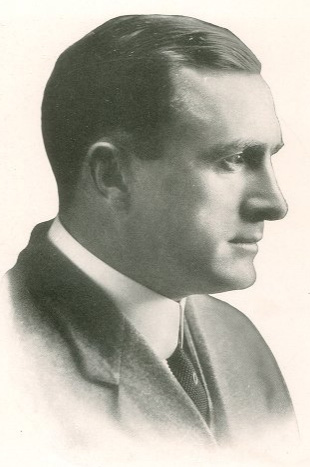
Paul Jones Davis was an American football and baseball player, coach of football, basketball, and baseball, and college athletic administrator. He served as the head football coach at Dickinson College (1908), Oklahoma Agricultural and Mechanical College—now known as Oklahoma State University (1909–1914), North Dakota Agricultural College—now known as North Dakota State University (1915–1917), and University of North Dakota (1920–1924), and Mansfield State Teachers College—now known as Mansfield University of Pennsylvania (1932–1937). Davis was also the head basketball coach at Oklahoma A&M (1911–1915), North Dakota Agricultural (1915–1918), and North Dakota (1920–1924), amassing a career college basketball coaching mark of 112–44. In addition, he was the head baseball coach at Oklahoma A&M from 1909 to 1915, tallying a record of 54–40–1.

Robert Cook Folwell Jr. was an American football player and coach. He served as the head coach at Lafayette College (1909–1911), Washington & Jefferson College (1912–1915), the University of Pennsylvania (1916–1919), and the United States Naval Academy (1920–1924), compiling a career college football record of 106–29–9. Folwell then moved to the professional ranks, coaching the New York Giants of the National Football League (NFL) in 1925, the Philadelphia Quakers of the American Football League in 1926, and the Atlantic City Roses of the Eastern League of Professional Football in 1927.

Percy Duncan Haughton was an American football and baseball player and coach. He served as head football coach at Cornell University from 1899 to 1900, at Harvard University from 1908 to 1916, and at Columbia University from 1923 to 1924, compiling a career college football record of 97–17–6. The Harvard Crimson claimed national champions for three of the seasons that Haughton coached: 1910, 1912, and 1913. Haughton was also Harvard's head baseball coach in 1915 and part owner of the Boston Braves from 1916 to 1918. He was inducted into the College Football Hall of Fame as a coach in 1951.
John Hobbs Adams was an American college football player and coach. He served two tenures as football coach for the Kansas State Wildcats and also coached high school football in San Diego.
Ward H. Haylett was an American football, basketball, track and field, and cross country running coach. Haylett served as the head football coach at Doane College—now known as Doane University—in Crete, Nebraska from 1924 to 1927 and Kansas State College of Agriculture and Applied Science—now known as Kansas State University compiling a career college football coaching record of 23–32–6. He was enshrined in the National Track and Field Hall of Fame in 1979.
John Brenden Law was an American football player, coach of football and baseball, and college athletics administrator. He was the third head football coach at Manhattan College and he held that position for two seasons, from 1930 until 1931. His career coaching record at Manhattan was 8–5–2. This ranks him fourth at Manhattan in total wins and first at Manhattan in winning percentage.
Herbert M. Kopf was an American football player and coach. He served as the head football coach at Manhattan College from 1938 to 1942 and as the head coach for the Boston Yanks of the National Football League (NFL) from 1944 to 1946.
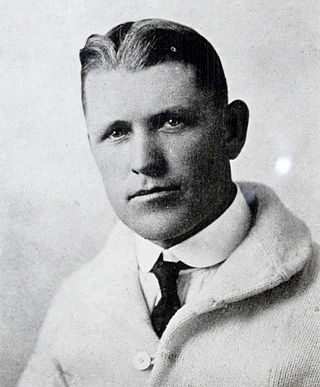
Whitcomb Glenn "Bunt" Speer was an American football and basketball coach. He served as the head football coach at Fort Hays State University in Hays, Kansas from 1915 to 1918 and Nebraska State Normal School—now known as Peru State College–from 1919 to 1922, and Midland College—now known as Midland University—in Fremont, Nebraska from 1923 to 1924, compiling a career college football coaching record of 50–21–3. Speer was also the head basketball coach at Nebraska State Normal from 1919 to 1923, tallying a mark of 71–22.
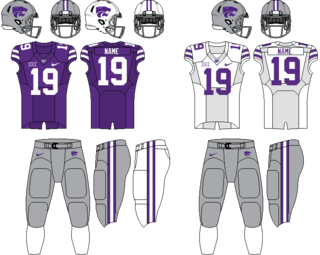
The Kansas State Wildcats football program is the intercollegiate football program of the Kansas State University Wildcats. The program is classified in the NCAA Division I Bowl Subdivision (FBS), and the team competes in the Big 12 Conference.

The Manhattan Jaspers are composed of 19 teams representing Manhattan College in intercollegiate athletics. The Jaspers compete in the NCAA Division I and are members of the Metro Atlantic Athletic Conference.

Thomas Joseph Thorp was an American college football player and coach, sports writer, and football and horse racing official. He served as the head football at Fordham University from 1912 to 1913 and New York University (NYU) from 1922 to 1924, compiling a career coaching record of 21–17–4.
The 1924 Utah Utes football team was an American football team that represented the University of Utah as a member of the Rocky Mountain Conference (RMC) during the 1924 college football season. Led by Thomas M. Fitzpatrick in his sixth and final season as head coach, the Utes compiled an overall of record of 3–4–1 with a mark of 2–2–1 in conference play, tying for sixth place in the RMC.
Harry Watson "Maud" Crum was an American football player and coach of football and basketball. He served as the head football coach at George Washington University from 1924 to 1928 and at Allegheny College from 1929 to 1931, compiling a career college football record of 40–25–7. Crum was also the head basketball coach at George Washington from 1927 to 1929, tally a mark of 13–14.
Ray Dreyer Hahn was an American football and basketball player and coach and college athletics administrator. He served as the head football coach at the South Dakota School of Mines—now known as South Dakota School of Mines and Technology—from 1929 to 1934 and Bethany College in Lindsborg, Kansas from 1938 to 1942 and again from 1946 to 1956, compiling a career college football coaching record of 70–104–4.

The Central Oklahoma Bronchos football team represents the University of Central Oklahoma (UCO) in college football. The team is a member of the Mid-America Intercollegiate Athletics Association (MIAA), which is in Division II of the National Collegiate Athletic Association (NCAA). The UCO Bronchos football program began in 1902 and has since compiled over 600 wins, two national championships, and 26 conference championships. As of 2011, the Bronchos were ranked third in NCAA Division II for total wins and ranked 12th in winning percentage (0.621). In 1962, the Bronchos went 11–0 on the season and defeated Lenoir–Rhyne University (NC) 28–13 in the Camellia Bowl to claim its first NAIA national championship. Twenty years later, Central Oklahoma defended its home turf and defeated Colorado Mesa University 14–11 in the NAIA national championship game to take its second title and finish the season with a 10–2 record. Despite its rich history in football, Central Oklahoma has struggled beginning in the late 2000s. The program has not participated in the NCAA Division II playoffs since 2003. The Bronchos play their home games at Chad Richison Stadium, a 10,000-seat football stadium built in 1965, and remodeled since 2015. The Bronchos have enjoyed nine undefeated home seasons and are 5–1 in playoff games at Wantland Stadium.
Britain Paterson (1888–1936), sometimes spelled Brit Patterson and Britton Patterson, was an American football player and coach. He played college football at Washington & Jefferson College in Washington, Pennsylvania. Patterson served as the head football coach at North Carolina College of Agriculture and Mechanic Arts—now North Carolina State University—in 1916, Waynesburg College—now known as Waynesburg University—in Waynesburg, Pennsylvania in 1924, and Manhattan College in 1927.
References
- ↑ Manhattan College coaching records Archived May 16, 2008, at the Wayback Machine
- ↑ "Manhattan (NY) football records 1920-1924". Archived from the original on 2010-02-07. Retrieved 2008-03-13.